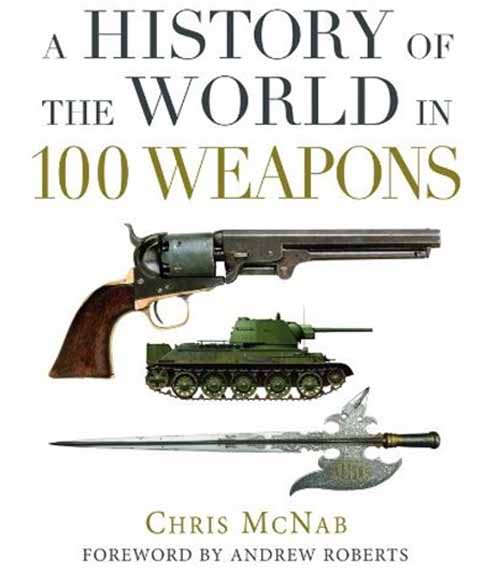A History of the World in 100 Weapons
Review

A History of the World in 100 Weapons, Chris McNab, Osprey Publishing, 2011, £25, 384 pages, ISBN 978-1-84908-520-5.
The BBC and Neil McGregor may have had great success with "History of the World in 100 Objects" but Osprey Publishing has done Chris McNab no favours in giving this book a similar title. He is certainly qualified to write on the development of weapons and military tactics over the last seven millennia and he does that job extremely well, but the title rather over-states what its content reveal. Even so, he makes a valid point that technology is one of the motive powers of history and that warfare is, sadly, one of the most technologically and intellectually productive of social conditions.
The book covers the history of weapons from 5000 BC to the modern day in seven well illustrated sections, although the layout is not as exciting as it could be in these days of computer design. Battle winners in the early warfare section include hoplites and the trireme, in medieval times the English longbow and in early modern warfare (1500 - 1800) the development of field artillery. I doubt whether the various swords and muskets included really changed history and it can be argued that Wellington might have been better served by longbows than the Brown Bess at Waterloo.
The four sections from 1800 contain the bulk of the 100 weapons or weapon systems and demonstrate the dramatic pace of development in the last two centuries. It is notable that simple weapons produced in bulk can often overwhelm more sophisticated designs; modern examples are the Russian T34 tank, the RPG 7 missile and, most of all, the AK 47 assault rifle, which McNab suggests has "literally reshaped the nature of post World War 2 global conflict".
The book appears to be designed for the American market and the selection of some US armoured vehicles could well be questioned, but there is no doubt that certain US weapons have astonished us all, not least the Tomahawk cruise missiles that we saw "racing down streets at treetop level" in Baghdad during the First Gulf War. The last weapon system of the 100 is "Unmanned Aerial Vehicles" and they clearly have massive potential for the future, even though America opted to use highly trained assault troops for its top priority task to take out Bin Laden. Certainly the MOD decision to cut manpower to pay for ever more complicated and expensive weapon system remains open to discussion.

